This Coconut Pudding is made entirely with coconut milk, giving it a creamy texture that still feels light. It has a true tropical flavor and comes together easily on the stovetop. Serve it as-is, or top it with a spoonful of whipped cream or fresh fruit for a simple, make-ahead dessert.
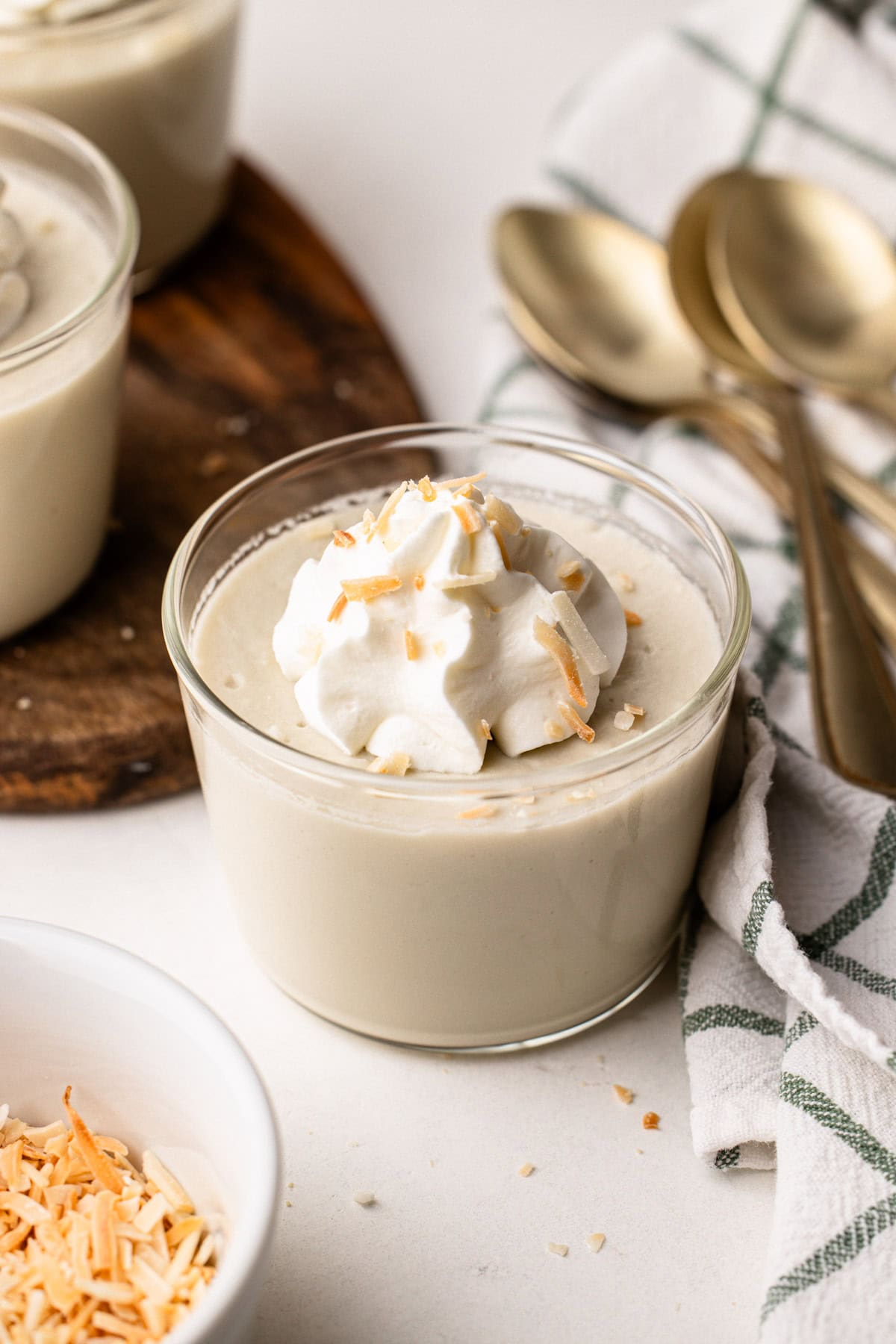
Want to save this recipe?
Enter your email & I'll send it to your inbox. Plus, get weekly updates from me!
Looking for a dessert that takes under 15 minutes to make, can be made ahead, and doesn’t require turning on the oven? This Coconut Milk Pudding checks all the boxes and it's so uniquely delicious. This stovetop coconut pudding is made with so many different types of coconut (some you may be familiar with, and some that may be new to you!) for a dessert that's full of that indulgent tropical flavor. It's naturally dairy-free, and without the heaviness of cream or milk, the pudding manages to be both super creamy yet light.
This recipe came about while I was re-testing my Coconut Cream Pie a few weeks ago. My goal with any recipe is to let the core flavor shine—whether it’s something simple like Vanilla Bean Panna Cotta or more (surprisingly) complex like real Strawberry Ice Cream. So I tested the pie filling using all coconut milk, and the result was incredible. But it felt like just a bit too much of a departure from what I envisioned a classic coconut pie to be. Much like what happened with my Strawberry Cream Pie and Strawberry Pudding, I decided to pull this wonderful coconut recipe out from the pie, and publish it as a stand-alone pudding recipe.

Ingredients Needed and Substitutions
With growing awareness around food allergies, there’s been an explosion of alternative products on the market—and coconut milk products are one category that’s really expanded. I took advantage of that range in this full-spectrum coconut pudding. Some of the ingredients might be familiar, while others could be new, so be sure to read the notes below to help you pick the right ones for this recipe. This is just an overview and the recipe card lists the full recipe with quantities and detailed instructions (located below this article).
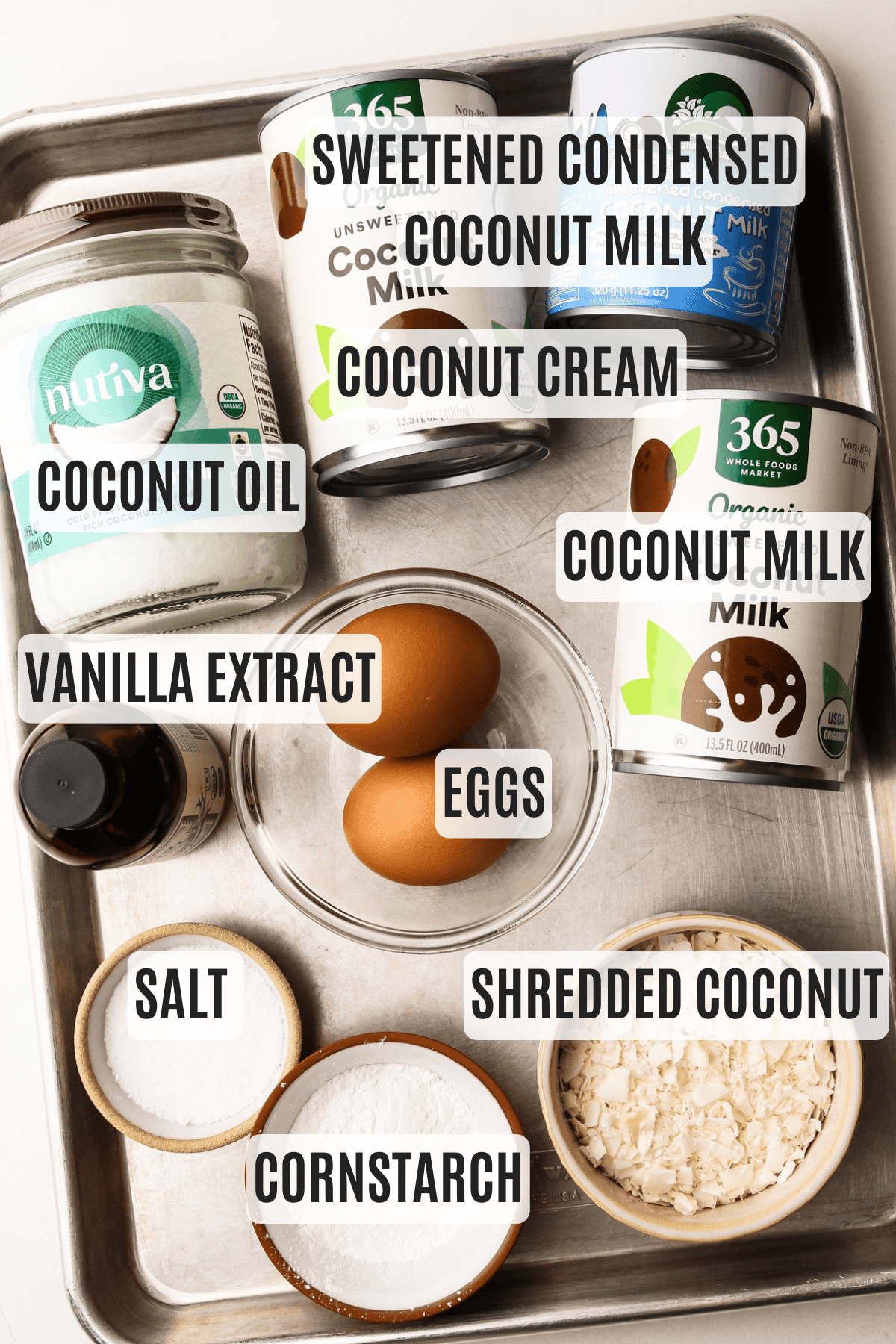
- canned coconut milk (use the full-fat with no extra added ingredients, if possible)
- sweetened condensed coconut milk (this is essentially a dairy-free version of traditional sweetened condensed milk. It’s made by simmering coconut milk with sugar until thick and syrupy and it has a strong coconut flavor...if you really can't find this ingredient, sweetened condensed milk can be substituted in it's place but the final pudding will have less coconut flavor)
- canned coconut cream (coconut cream is the thick, solid layer you’ll often see settled at the top of full-fat coconut milk...it has a higher fat content and a more concentrated coconut flavor...it’s commonly sold in its own in cans labeled “coconut cream,” usually found right next to the coconut milk at most grocery stores....just be sure not to confuse it with cream of coconut, which is a sweetened product used in cocktails and desserts...if you can't find this, an additional can of coconut milk will work fine)
- virgin coconut oil (this is an unrefined coconut oil that has a prominent coconut flavor....refined coconut oil has a neutral taste
- coarse kosher salt (this recipe was tested using Diamond Crystal coarse kosher salt. If you use Morton's kosher salt or fine salt, decrease by about half for volume)
- cornstarch (this has just enough cornstarch to thicken the pudding to a cream texture, but not so much that it's going to set firm)
- eggs
- vanilla extract
- unsweetened shredded coconut (see more below)
Do Not Use Cream of Coconut
Don’t confuse cream of coconut with any of the ingredients listed in this coconut pudding recipe. Cream of coconut is a sweetened product often used in cocktails (with brands like Coco Lopez) and typically contains added ingredients beyond just coconut and sugar. I haven’t tested this recipe with it, and it would likely affect both the texture and sweetness of the pudding—so I don’t recommend using it here.
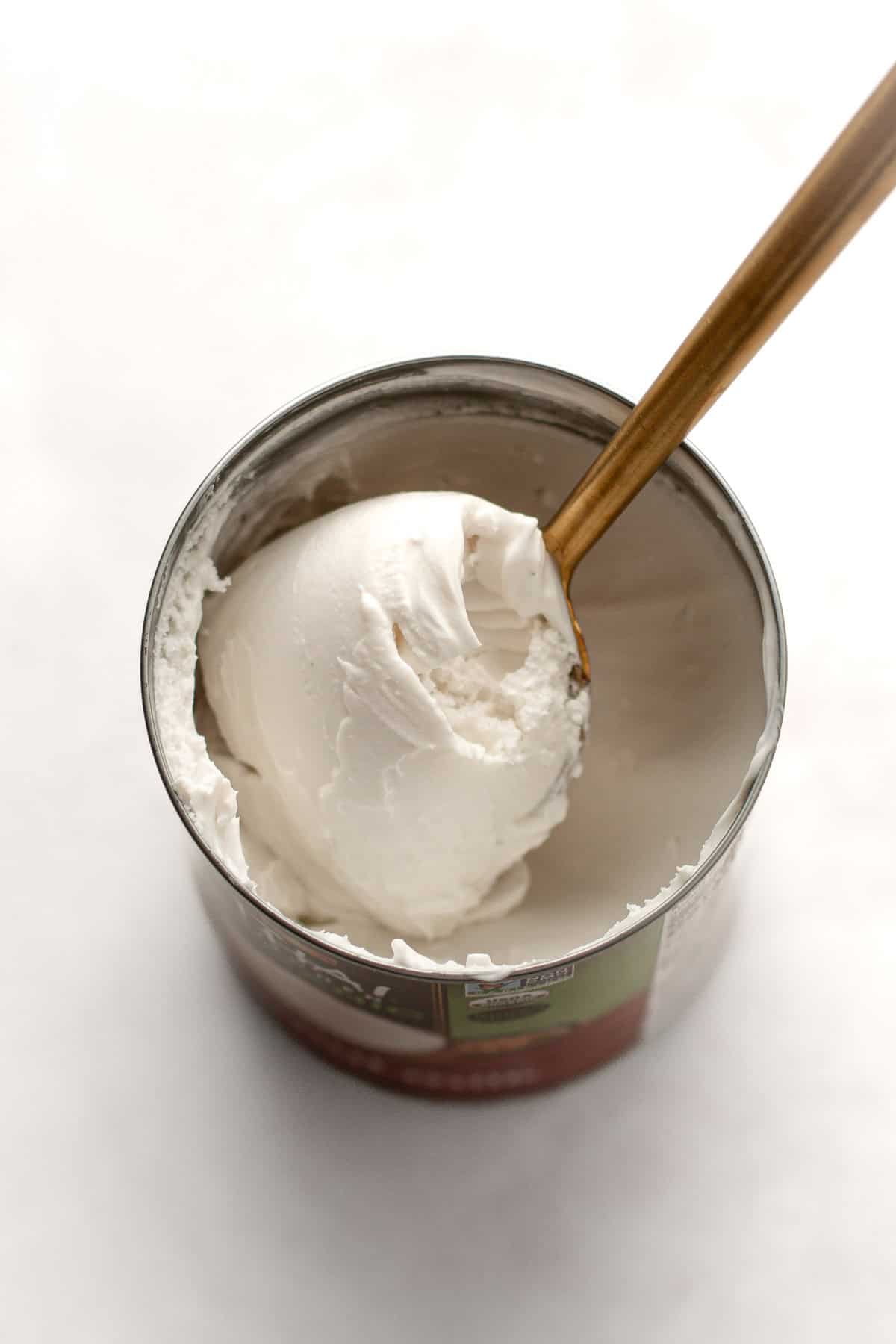
Shredded Coconut Options
There are a lot of options when it comes to dried coconut—from sweetened shredded to reduced-fat finely shredded varieties. This recipe has some flexibility in the type of coconut that can be used, but I recommend unsweetened fine shredded (full-fat) coconut. Why unsweetened coconut? The first is that it generally contains one ingredient: coconut. And, unsweetened means the baker gets to control the sweetness. That said, if you truly love sweetened coconut, go for it!
How to Make It
While many other pudding recipes call for tempering the eggs, my method skips that outdated and unnecessary step. The pudding comes together easily in one pot without any extra fuss.
Here is a quick visual overview of the steps needed to make this recipe. This is not the actual recipe, which is located at the end of this article and has much greater detail to ensure success.
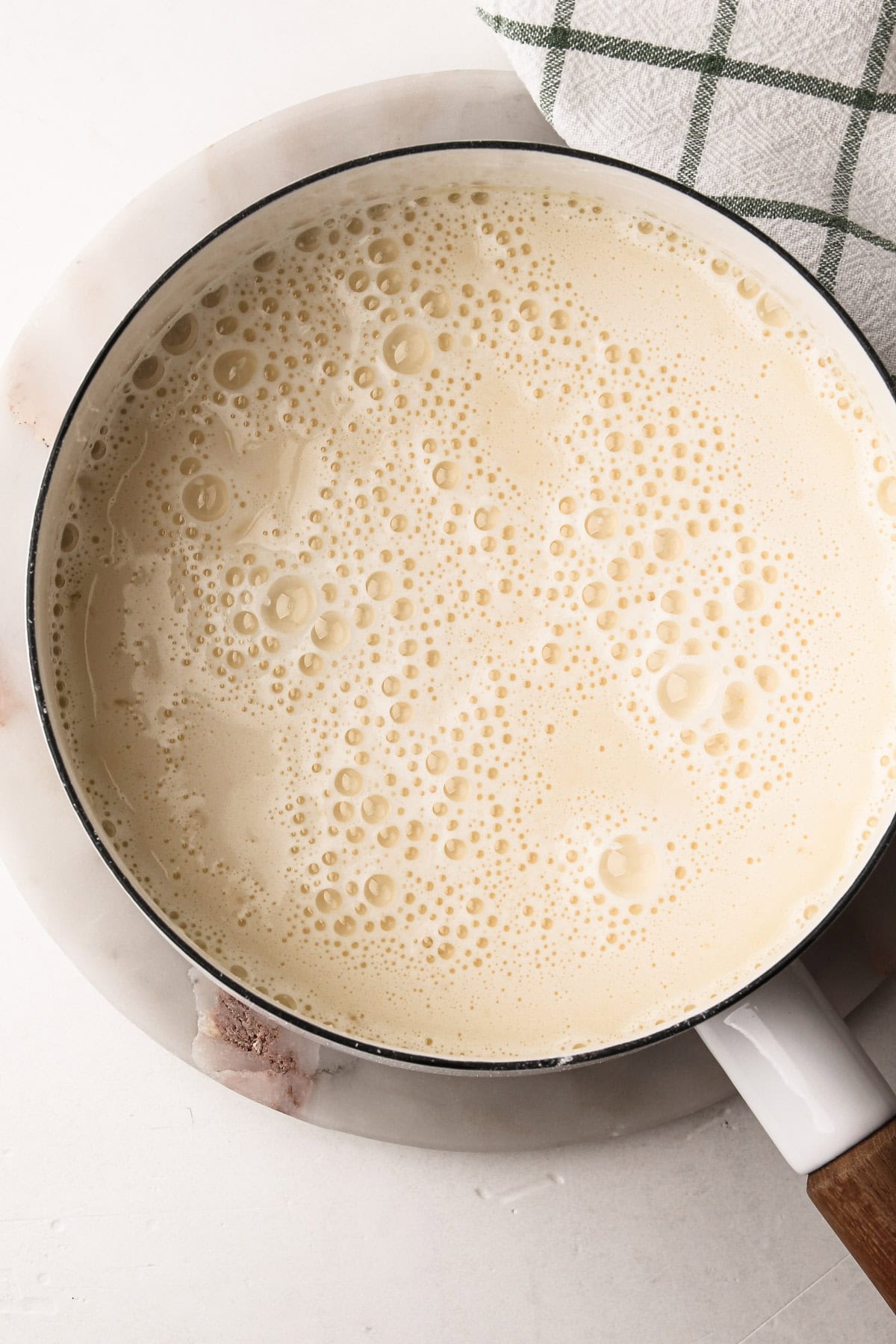
Step 1: Add the three coconut milks, eggs, and cornstarch and salt to a medium pot and whisk together.
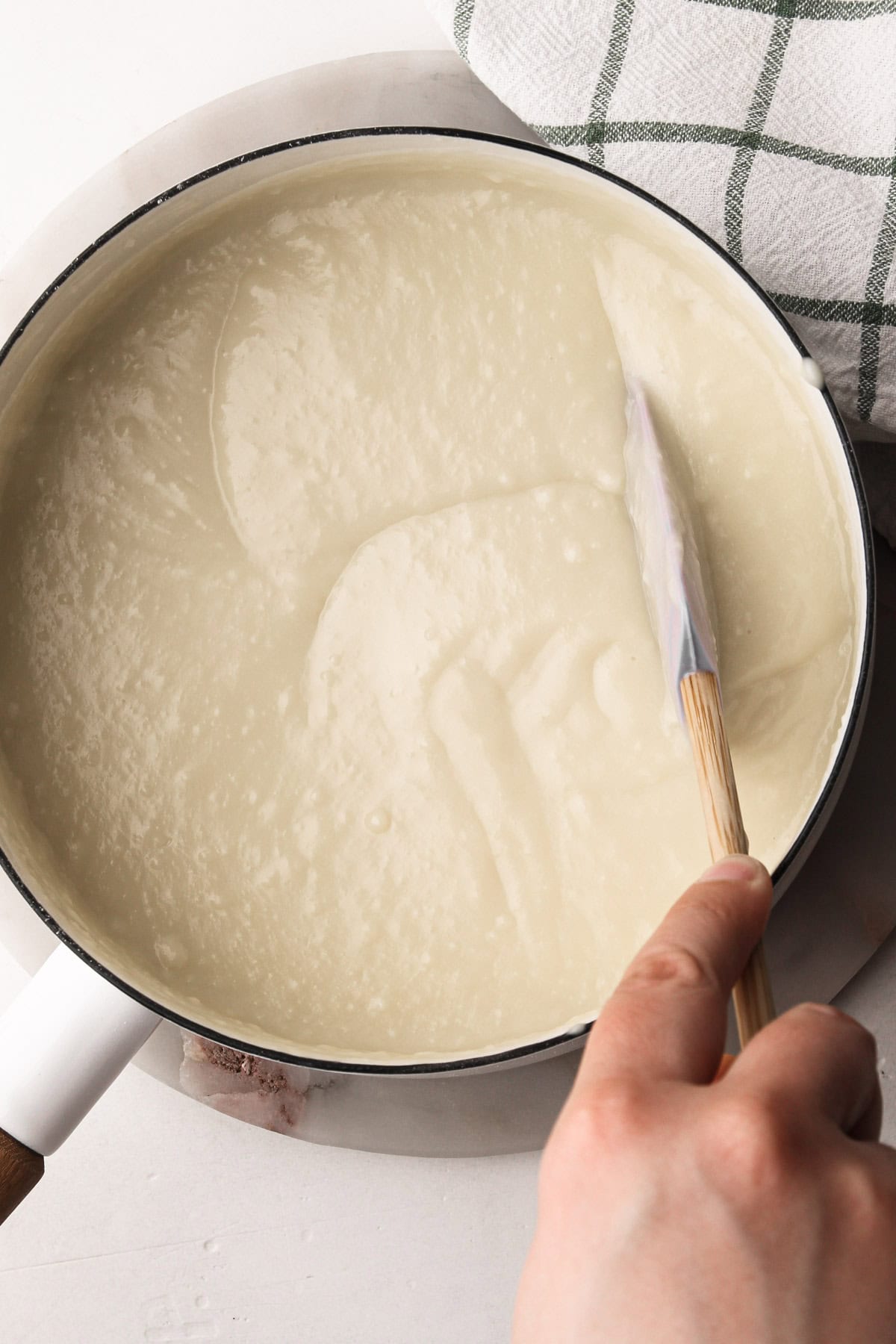
Step 2: Cook until the pudding has thickened completely and large bubbles are forming and popping throughout and in the center.

Step 3: Strain the pudding, then stir in the coconut, coconut oil and extract.
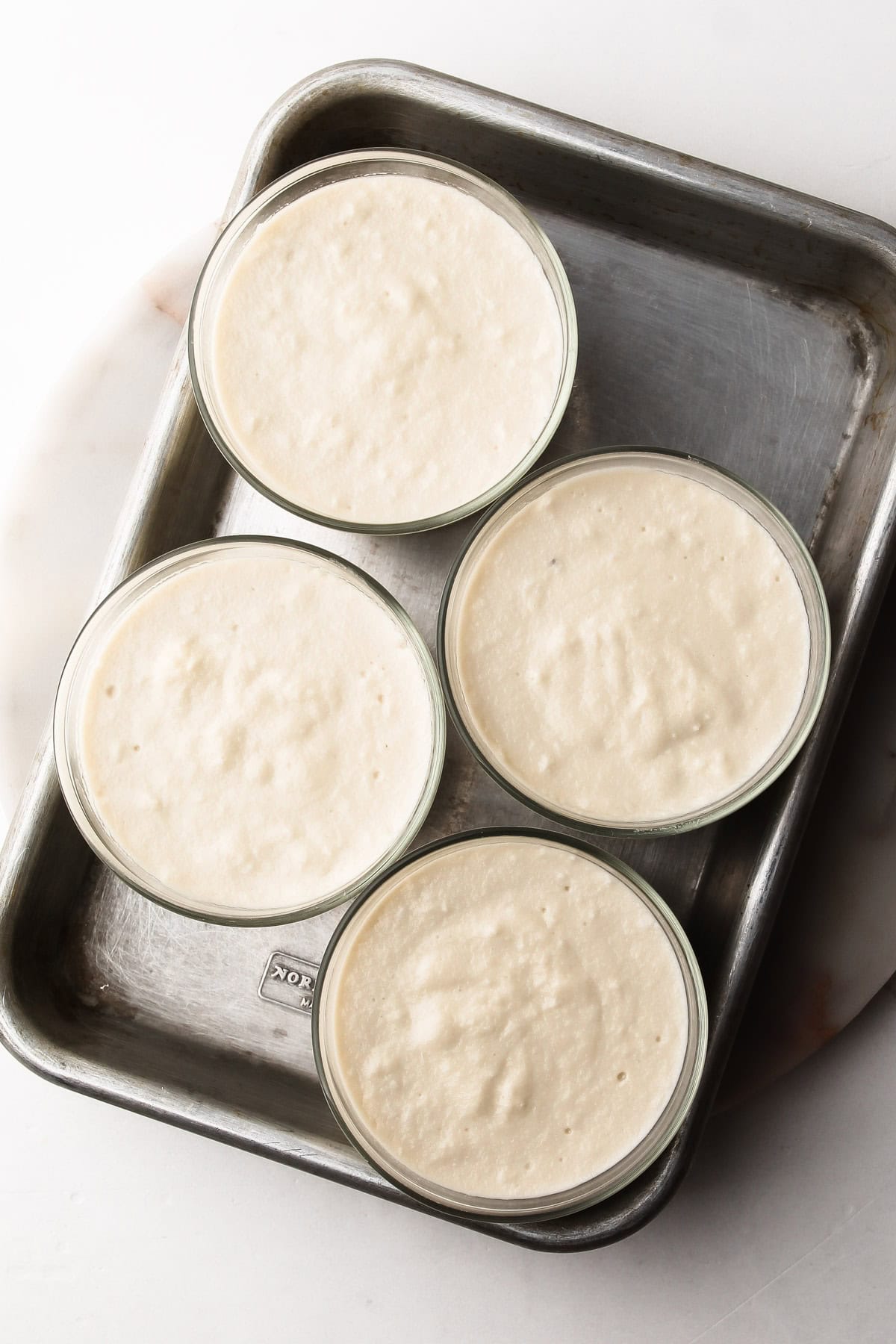
Step 4: Let chill to set up before serving.
Serving + Storing
Coconut pudding needs about 4 hours to chill and finish setting up. Though, if you want to eat it warm, go for it! Do note: the pudding will taste sweeter when served warm vs. chilled.
To prevent a skin from forming on top of the pudding, cover its surface with plastic wrap while it's still warm. Or don't. Some people like that textural element on top of the pudding (and that some people is me).
Coconut Pudding is best eaten within 1-2 days of being made, but it will last up to 3 days. As the days go on, the pudding might release some moisture. This is fine to consume, just stir it back into the pudding before serving.
A dollop of whipped cream adds a nice contrast to the all-coconut milk pudding, but skip it to keep the dessert dairy-free. Toasted coconut flakes on top are also a perfect finishing touch.
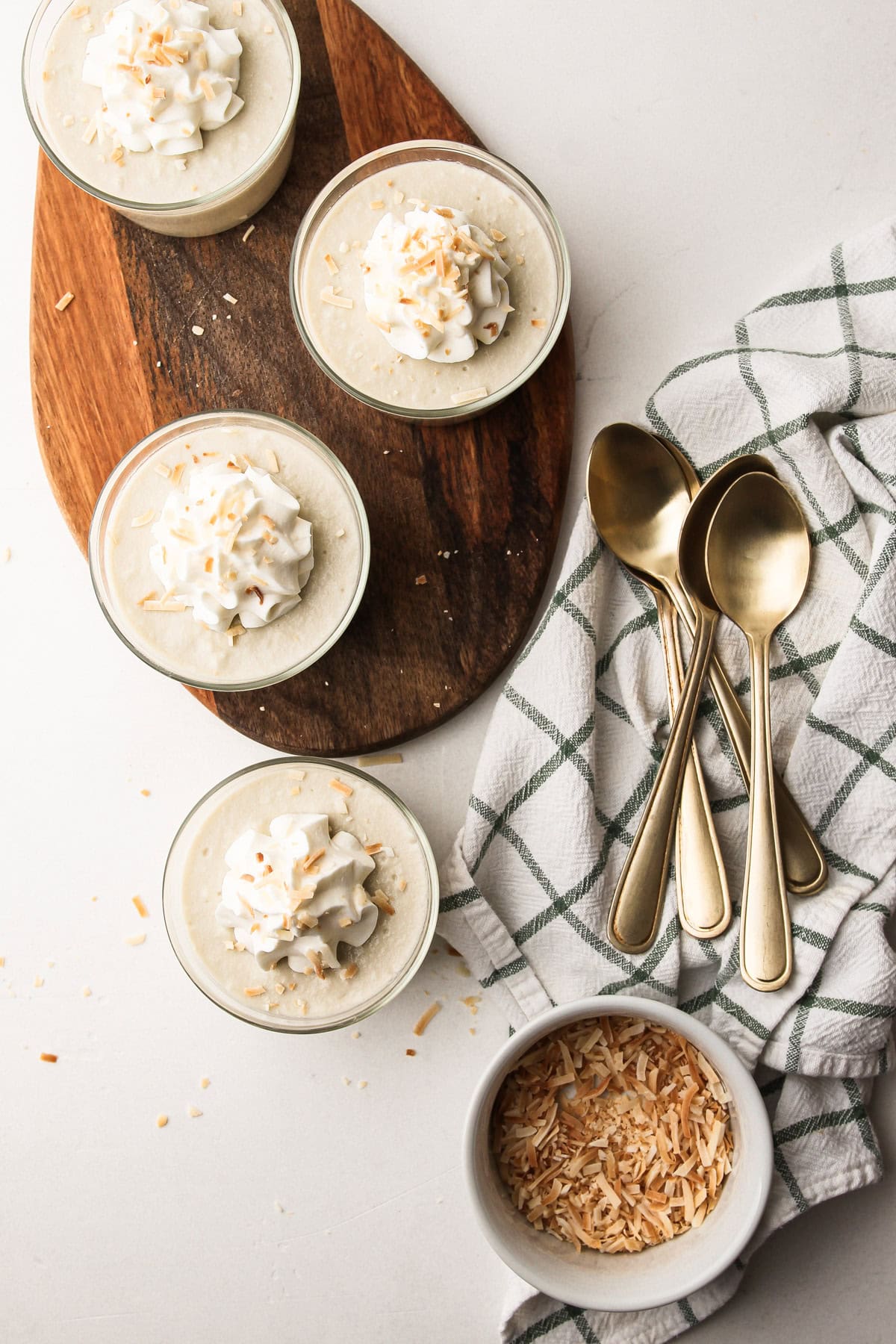
More Coconut Recipes:
More Pudding Recipes
I am so honored when you make a recipe from my site! If you make this Coconut Milk Pudding, please leave a star ⭐️⭐️⭐️⭐️⭐️ rating with your experience! If you have any questions about this recipe, feel free to comment here, and tag me on Instagram!
Full Recipe
Coconut Pudding (Made with Coconut Milk)
This easy Coconut Milk Pudding is rich, silky, and full of coconut flavor. It’s a simple dessert that also happens to be dairy-free, thanks to its coconut base—but that’s really just a bonus. The real appeal is in the texture and flavor: thickened with eggs and cornstarch, it’s smooth and luscious, with a bit of shredded coconut stirred in at the end for subtle texture and chew.
- Prep Time: 00:05
- Cook Time: 00:10
- Total Time: 15 minutes
- Yield: 00:15, plus chilling time
- Category: Dessert
Ingredients
- 1 (11.2-ounce) can sweetened condensed coconut milk
- 2 large eggs
- ¼ cup (40 grams) cornstarch
- Big pinch coarse kosher salt
- 1 (13.5-ounce) can unsweetened coconut milk
- 1 (13.5-ounce) can coconut cream (see note)
- ⅓ cup (30 grams) unsweetened shredded coconut (see note)
- 2 tablespoons (30 grams) unrefined coconut oil
- 1 teaspoon vanilla extract
Instructions
- Set a fine-mesh strainer over a medium bowl and set aside.
- Add the sweetened condensed coconut milk, eggs, cornstarch, and salt to a medium pot and whisk together until no lumps remain. Add in the coconut milk and coconut cream and stir to combine.
- Turn on the heat to medium. Cook the mixture, whisking constantly and occasionally using a rubber spatula to scrape up any thickened pudding in the edges of the pan, until the pudding has fully thickened and large bubbles are forming and popping, about 8 minutes.
- Remove from the heat and immediately pour the coconut pudding through the fine-mesh strainer into the bowl, using the spatula to push all the pudding through the strainer while leaving behind any bits of egg.
- Whisk the shredded coconut, coconut oil, and vanilla into the pudding until fully combined.
- Pour the pudding into individual serving vessels, if desired, or one large serving bowl. Place plastic wrap directly on the surface of the pudding to prevent a skin from forming (or if you don’t care about the thickened crust forming, skip this). Let cool to room temperature before chilling in the refrigerator for at least 4 hours, but preferably overnight.
Notes
Have some questions about any of the ingredients listed? See the above section titled “Ingredients Needed” in the article about the recipe.
There are many types of dried coconut, but unsweetened fine shredded coconut is best for controlling sweetness and keeping the ingredient list simple. However, sweetened coconut can be used if a sweeter result is preferred.
Cream of coconut is a sweetened product often used in cocktails, and it's not the same as the coconut cream called for in this recipe. Using cream of coconut will alter both the texture and sweetness of the pudding, so it's not recommended here.
Can this pudding be used as the filling for a coconut cream pie? Yes, it can! Because so many coconut milk products are used here, in order for it to set fully as a pie, increase the eggs from 2 to 3. Directly after making the pudding, transfer it to a prepared pie crust and let it cool and set up. See this recipe for a more traditional Coconut Cream Pie recipe.
Some of the links on this page may be affiliate links. Everyday Pie is a participant in the Amazon Associates Program. As an Amazon Associate I earn from qualifying purchases, at no extra cost to you.


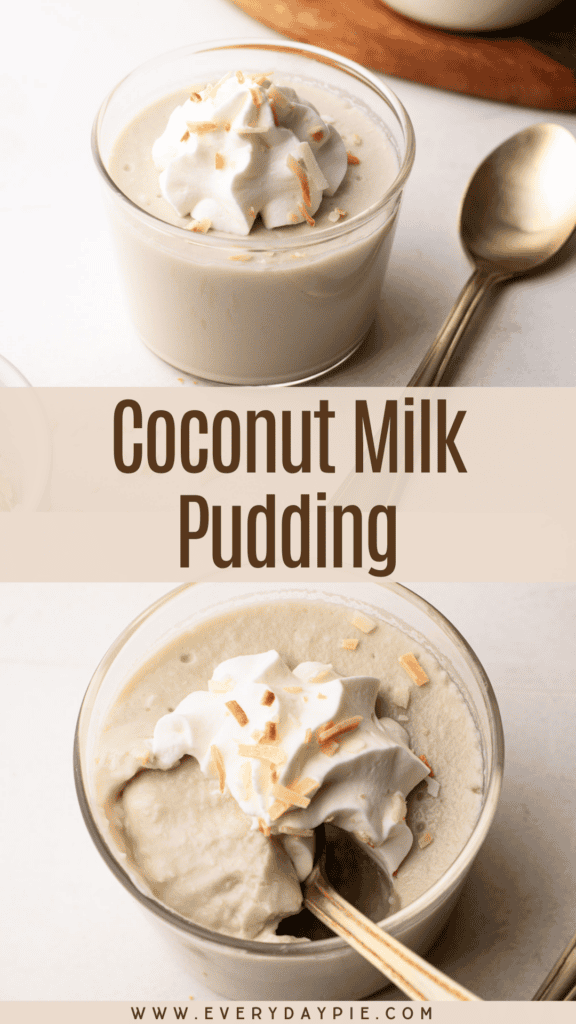
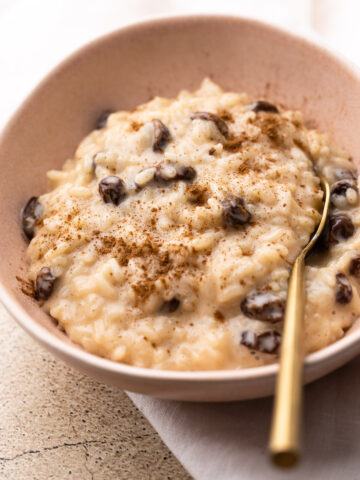
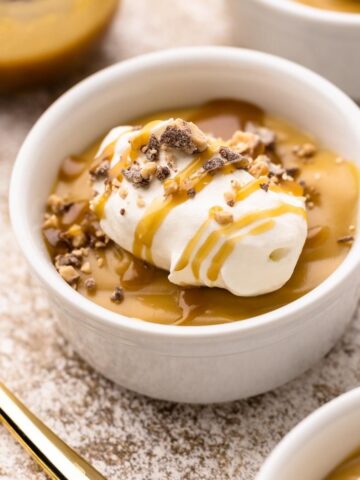
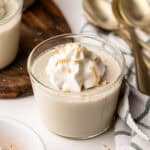
Ric Rowe
I really want to make this pudding, but did not find nutritional values... at 80, I confess to have rarely fussed over nutritional values of my desserts, preferring to use portion control over my intakes. Unfortunately, I am now recovering from open heart surgery, so it's a matter of self-preservation to take notice. I can get to the values by looking them up for each ingredient, but if you have them, then it will save me a good deal of time.
thank you for any assistance you might provide.
Sincerely,
-Ric Rowe
Jacksonville, Illinois